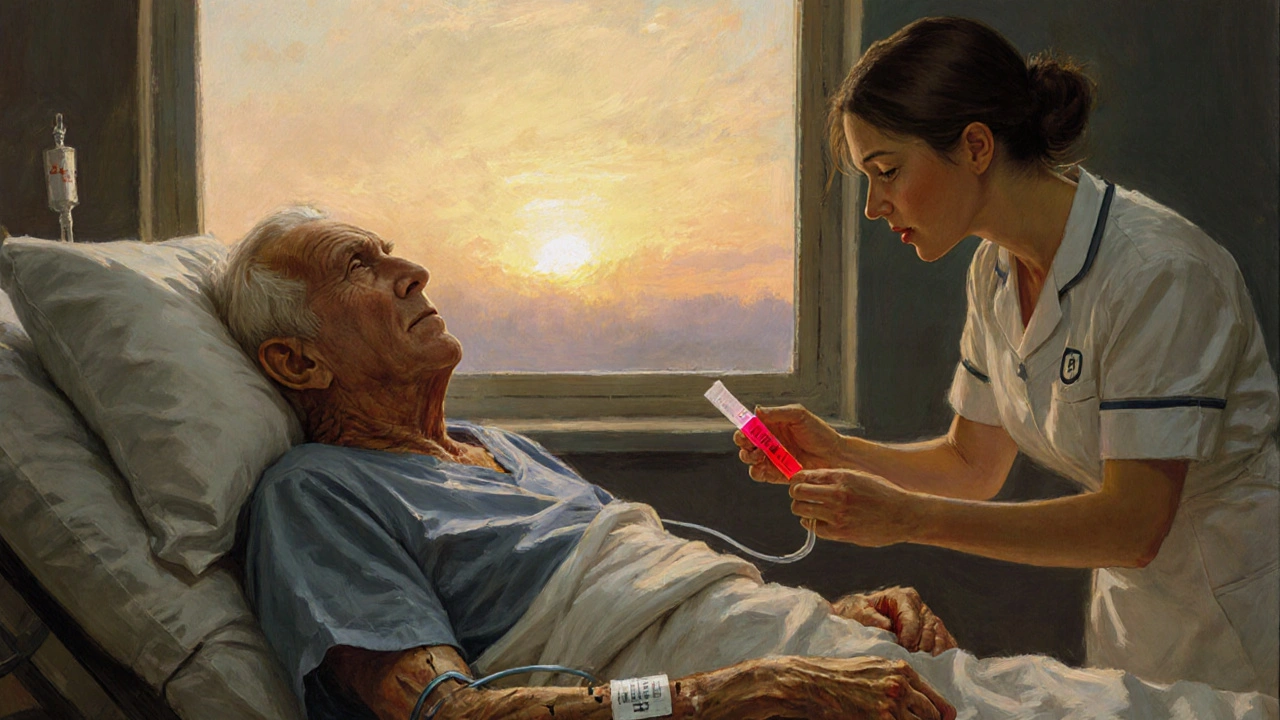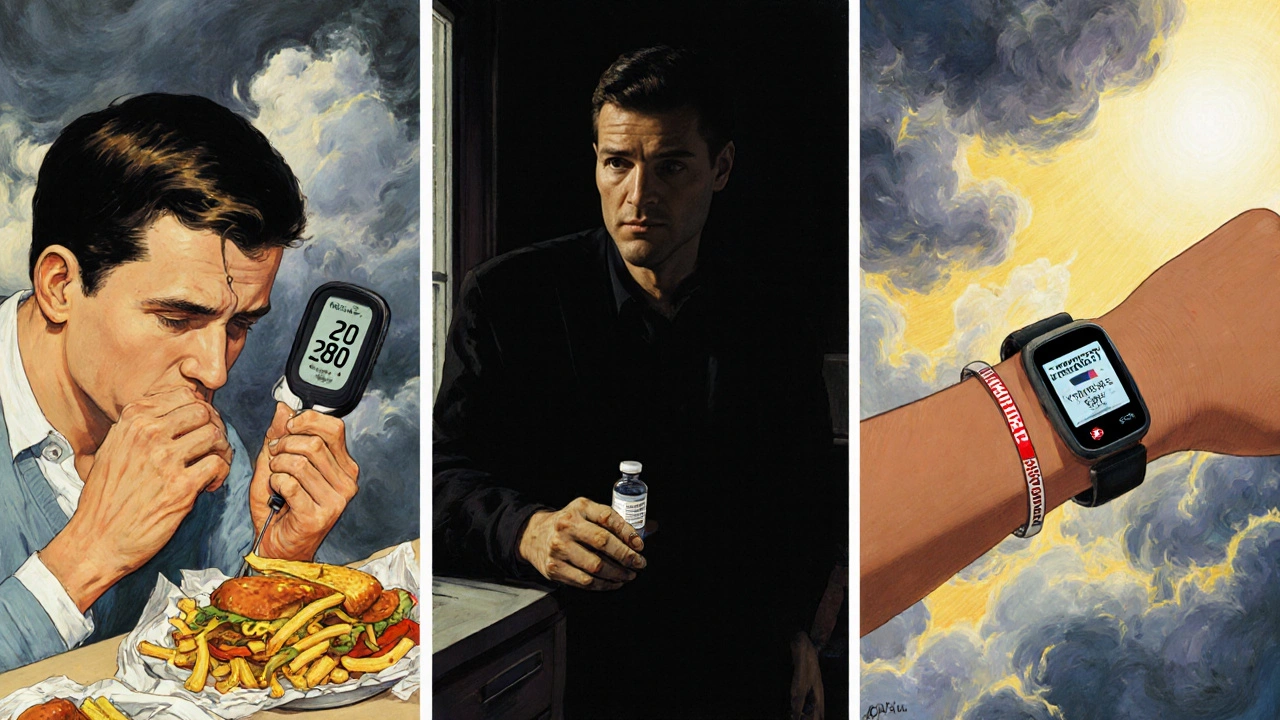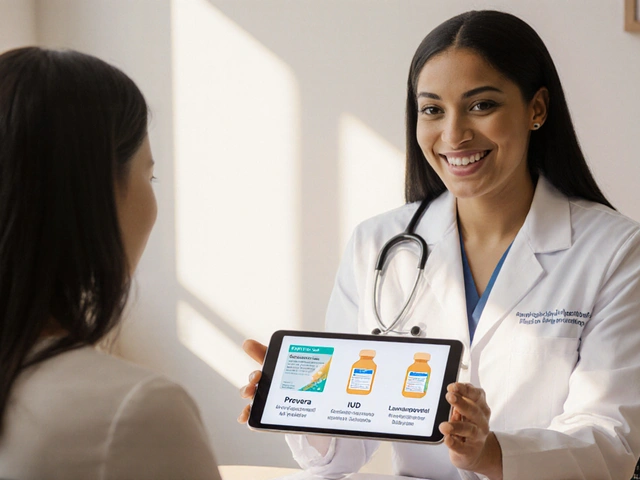When your blood sugar climbs too high, your body doesn’t just feel tired-it starts to break down. Hyperglycemia isn’t just a number on a glucose meter. It’s a warning sign your body can’t use the fuel it needs. For people with diabetes, it’s one of the most common and dangerous problems they face. And if left unchecked, it can turn into a life-threatening emergency in hours.
What Exactly Is Hyperglycemia?
Hyperglycemia means your blood glucose level is above 180 mg/dL. That’s the point where your kidneys can’t hold onto all the sugar anymore, and it starts spilling into your urine. This isn’t just about eating too much cake. It’s about your body failing to move glucose from your blood into your cells. In type 1 diabetes, your pancreas doesn’t make insulin. In type 2, your cells ignore insulin. Either way, sugar piles up in your bloodstream.Levels between 180-250 mg/dL are considered mild. At 251-300 mg/dL, it’s moderate. Above 300 mg/dL? That’s serious. And above 600 mg/dL? That’s a medical emergency. People often don’t realize how fast things can spiral. One missed insulin dose, an infection, or even extreme stress can push someone into danger.
Early Signs You Can’t Ignore
The first symptoms are subtle-but they’re there. If you’re checking your blood sugar regularly, you’ll catch them early. If you’re not, you might not notice until it’s too late.- Peeing a lot-more than 2.5 liters a day. Your body’s trying to flush out the extra sugar.
- Constant thirst-drinking 4 liters or more and still not satisfied. Your body’s trying to replace lost fluids.
- Blurred vision-your eyes swell slightly as sugar pulls fluid into them. It’s not an eye problem. It’s a blood sugar problem.
- Extreme fatigue-you’re not just tired. You feel drained, even after sleeping. Your cells are starving for energy.
These aren’t random symptoms. They’re your body screaming for help. In a 2023 survey of over 2,800 people with diabetes, nearly 7 out of 10 didn’t recognize these signs until their blood sugar was already over 300 mg/dL. That’s too late.
When It Gets Worse: The Intermediate Stage
If your blood sugar stays above 250 mg/dL for more than a few hours, things get more serious. Your brain starts to struggle. Your body starts breaking down fat for energy-and that’s where things turn dangerous.- Headaches-dull, constant pressure behind the eyes. Not a tension headache. This is metabolic.
- Difficulty focusing-you forget words, lose track of conversations. Your brain is flooded with sugar and running on empty.
- Unexplained weight loss-losing more than 5% of your body weight in a few months without trying. Your body is eating itself for fuel.
One patient in a Reddit diabetes group described it like this: "I thought I was just getting sick. I lost 12 pounds in three weeks. I thought it was stress. My blood sugar was 420 when I finally checked. I ended up in the ER."

Emergency Signs: Diabetic Ketoacidosis and HHS
When blood sugar climbs past 300 mg/dL, two life-threatening conditions can develop: diabetic ketoacidosis (DKA) and hyperosmolar hyperglycemic state (HHS). They’re different, but both need immediate treatment.DKA mostly happens in type 1 diabetes. It’s fast. It hits in 24 to 48 hours. Your body burns fat because it has no insulin. That creates toxic acids called ketones. Signs include:
- Deep, rapid breathing (Kussmaul respirations)-your body tries to blow off acid.
- Fruity-smelling breath-like nail polish remover or overripe apples.
- Nausea, vomiting, stomach pain-often mistaken for the flu.
- Confusion or drowsiness.
HHS is more common in type 2 diabetes, especially older adults. It creeps up over days or weeks. There are few or no ketones, but your blood gets so thick with sugar it turns into syrup. Signs include:
- Extreme dehydration-dry mouth, sunken eyes, no urine for hours.
- Severe confusion or weakness.
- Loss of consciousness.
- High fever (in some cases).
DKA has a 1-5% death rate. HHS kills 15-20% of people who get it. And for people over 65, HHS is even deadlier-up to 22% mortality. That’s why waiting is not an option.
What to Do Right Now
If your blood sugar is over 240 mg/dL, don’t wait. Don’t hope it’ll go down on its own. Act.- Check for ketones. Use a urine test strip or a blood ketone meter. If ketones are moderate or high, you’re at risk for DKA.
- Take your correction insulin. Use your personal insulin-to-carb ratio or correction factor. Most people need 0.1 units per kg of body weight every hour until levels drop. Never skip this step.
- Drink water. 8-16 ounces every hour. Sugar-free fluids only. No soda, juice, or sports drinks. You’re trying to flush sugar out, not add more.
- Call your doctor or go to the ER. If your blood sugar stays above 300 mg/dL for more than 2 hours, or if you have any signs of DKA or HHS, get help immediately.
One of the biggest mistakes people make is "insulin stacking"-taking more insulin because the first dose didn’t work fast enough. That can crash your blood sugar later. Always wait at least 3-4 hours between doses unless your doctor says otherwise.
What Triggers These Crises?
It’s not always about forgetting insulin. Here are the most common causes:- Illness-infections like flu, UTIs, or pneumonia raise stress hormones that spike blood sugar. 42% of emergency cases are linked to sickness.
- Insulin pump failure-blocked tubing, dislodged catheters, or battery issues. 18% of cases come from pump problems.
- Carb counting errors-miscalculating carbs in meals, especially when eating out. 29% of episodes trace back to this.
- Stress or emotional trauma-grief, anxiety, or even a big argument can trigger a spike. 11% of cases.
- Dawn phenomenon-your liver releases sugar between 4-8 a.m. due to natural hormone changes. This affects 60% of people with type 1 diabetes.
One man in Bristol told his doctor he kept waking up with blood sugar over 350. He thought he was eating too much at night. Turns out, his basal insulin was too low. Adjusting his overnight dose cut his morning spikes in half.

How to Prevent This From Happening
Prevention isn’t about perfection. It’s about awareness and consistency.- Check your blood sugar regularly. Especially when you’re sick, stressed, or eating differently.
- Use a continuous glucose monitor (CGM). People using CGMs reduce severe hyperglycemia by 57%. Real-time alerts give you time to act before it’s an emergency.
- Know your insulin plan. Don’t guess correction doses. Have a written plan from your doctor.
- Have a sick-day plan. What do you do if you can’t eat? What insulin do you take? Write it down and keep it with your glucose meter.
- Get educated. Programs like the CDC’s Diabetes Self-Management Education reduce ER visits by 42%.
And don’t ignore the emotional side. Many people delay treatment because they feel guilty or overwhelmed. That’s called "diabetes distress." It’s real. And it kills. Talk to someone-a nurse, a counselor, a support group. You’re not alone.
What’s New in 2025?
Technology is catching up. In January 2024, the FDA approved Dexcom G7’s "Glucose Guardian"-a predictive algorithm that warns you 30 minutes before your sugar spikes. Early data shows it cuts severe hyperglycemia by 31%.The NIH is now funding a $150 million initiative to use AI and wearables to predict hyperglycemia before it happens. By 2025, new guidelines will relax blood sugar targets for older adults (over 65) to under 180 mg/dL fasting-recognizing that tight control isn’t always safer for them.
But tech alone won’t fix this. The biggest gap? Access. Black patients are 2.3 times more likely to have hyperglycemia emergencies than white patients-not because of behavior, but because of insulin cost, delayed care, and lack of education.
Final Thought: This Is Manageable
Hyperglycemia isn’t a failure. It’s a signal. Every high reading is a chance to learn, adjust, and protect yourself. You don’t need to be perfect. You just need to be prepared.If you know the signs, act fast, and have a plan, you can avoid the ER. You can avoid the ICU. You can keep living your life-without fear.
What blood sugar level is considered a hyperglycemia emergency?
A blood sugar level above 300 mg/dL is considered severe and requires immediate action. Levels above 600 mg/dL are life-threatening emergencies, often leading to hyperosmolar hyperglycemic state (HHS). If you’re above 240 mg/dL and have ketones, nausea, vomiting, or confusion, seek emergency care right away.
Can you have high blood sugar without having diabetes?
Yes. While most common in diabetes, hyperglycemia can happen in non-diabetic people during severe illness, trauma, infection, or after taking certain medications like steroids. Conditions like Cushing’s syndrome, pancreatitis, or major surgery can also cause temporary high blood sugar. If it happens repeatedly, you should be tested for diabetes.
What’s the difference between DKA and HHS?
DKA (diabetic ketoacidosis) happens mostly in type 1 diabetes and involves high blood sugar plus high ketones and acid in the blood. You’ll have fruity breath, rapid breathing, and vomiting. HHS (hyperosmolar hyperglycemic state) happens mostly in type 2 diabetes, with extremely high blood sugar (often over 600 mg/dL), little to no ketones, and severe dehydration. HHS causes confusion, weakness, and coma more often-and has a higher death rate.
Should I exercise if my blood sugar is high?
Only if your blood sugar is under 300 mg/dL and you have no ketones. If your sugar is over 250 mg/dL and ketones are present, exercise can make things worse by pushing your blood sugar even higher. Check ketones first. If they’re low or negative, light activity like walking can help lower sugar. If ketones are high, rest and hydrate instead.
How long does it take to recover from a hyperglycemia episode?
Mild episodes (250-300 mg/dL) usually resolve within 4-8 hours with insulin and fluids. Moderate to severe episodes (300+ mg/dL) may take 12-24 hours to stabilize, especially if you’re dehydrated or in DKA/HHS. Recovery in the hospital can take days. The key is not just lowering the number-it’s restoring balance to your body’s fluids and electrolytes.
Can stress cause high blood sugar?
Yes. Stress-whether from work, grief, arguments, or even excitement-triggers hormones like cortisol and adrenaline. These hormones tell your liver to release stored sugar into your blood. Even if you haven’t eaten, your sugar can spike. Managing stress through sleep, breathing, or counseling is part of diabetes care.
What should I keep in my emergency kit for high blood sugar?
Your emergency kit should include: fast-acting insulin (with syringes or pen), a blood glucose meter, test strips, ketone test strips, sugar-free fluids (water, electrolyte drinks), a copy of your insulin correction plan, and a medical ID bracelet. Keep it in your bag, car, and at work. Also, have your doctor’s or endocrinologist’s number saved in your phone.
Is it safe to drive with high blood sugar?
No. High blood sugar can impair your thinking, reaction time, and vision-even if you don’t feel dizzy. The ADA recommends not driving if your blood sugar is over 200 mg/dL and you’re feeling confused, fatigued, or have blurred vision. Pull over, test, treat, and wait until your sugar is under 150 mg/dL and you feel alert.





